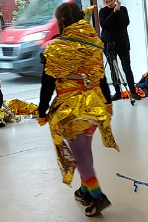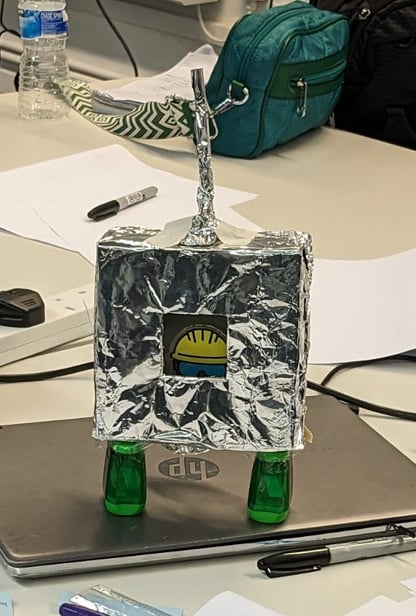
Portfolio
Poster of our first workshop in Sep 2018 - Called Clinical Trials in Interplanetary Missions (Designed by Nick Peres. The workshop was used to re-think how we design clinical trials especially for future space exploration,


A Simulated environment of Mars CReated by Agatha Haines for the MFL workshop at Rhode Island School of Design (USA)
Children dressed up as planets in the planetary show as part of a MFL workshop in London with schoolchildren from Lewisham. The workshop was part of a bigger event called SpaceLab.

Our creative robotics workshop was on 7 November 2023 at the Creative robotics department at University of Arts London. The workshop was led by Mona Nasser as part of the Hooman Samani Creative Robotics Course. The photos were taken as part of the workshop by Mona Nasser.
(MFL was a collaborator)
The workshop was led by Pamela Cajilig at University of Philippines, College of Architecture on 28 Oct 2023. MFL was a partner amongst other organisations. Mona Nasser on behalf of MFL offered some elements and concepts of MetaFuturism workshops to support this event. The students re-imagined the concept of housing in an alternative future.
The images were prepared and taken by Pamela Cajilig.

Sample of part of the Science Fiction Story (written by Mona Nasser)
Welcome to a new planetary system - TRAPPISTENUM
For the last ten generations, you've been residing light years away from Earth. On your planet and its neighboring ones, there are almost no inhabitants who have direct ties to Earth; their knowledge comes solely from stories passed down by great-great-grandparents, some of which have taken on a mythical quality. The arrival of humans on these planets occurred through a generational interstellar spaceship.
Jfsj GGui immersed themselves in the only book detailing Earth's situation before its inhabitants departed. Earth was plagued by storms, typhoons, flooding, and periods of drought. Its inhabitants had to adapt to extreme conditions, preparing them for life on the planet in the Trappistenum planetary system—a tidally locked planet where one side always faces the sun. This unique rotation creates three distinct areas on each planet: a desert-like region exposed to the sun, a barren frozen area on the opposite side, and a mild climate in between. Most inhabitants live in this habitable zone, where adaptation and resilience have become essential traits for survival.
The photo is AI generated by NightCafe.

It looked like a movie in slow motion. People walking very slowly through grounds that are half covered in water.
In this specific country, people acknowledged that in a world where ground and water intertwined, every step mattered. The terrain was unpredictable – a grassy stretch of land could give way to ankle-deep water without any warning. For centuries, the inhabitants had adapted to this unique landscape, understanding the rhythm of the earth beneath their feet and the water that seeped through.
It wasn’t just about the physical journey; it was a mental and spiritual one too. Taking the time to move through the world slowly allowed them to feel the water’s pulse, to understand its nature. The nuances of the water dictated their daily lives. It communicated whether the day was to be joyous, contemplative, or filled with caution........
